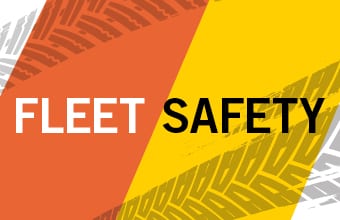What Fleet Safety Policies Should Cover
There are three components that make up fleet safety, which includes drivers, vehicles, and policy. The third component, fleet policy, should make some consideration to fleet safety.
Fleet policy must address several key elements:
- Who: Which employee is assigned a company vehicle. Which hire candidates, and ongoing employees, are permitted to be assigned and operate a company provided vehicle.
- When: When is the employee permitted to drive the vehicle, i.e., personal use, business use, and for which expenses will the company pay.
- What: What vehicles will be assigned? What makes, models, and equipment are approved?
- Where: Are there any limits to where a company vehicle may be operated, both for business and personal purposes?
- Why: Why does a particular job function need a company provided vehicle? What prevents the company from requiring an employee to use his/her personal vehicle on company business?
- How: How is the vehicle acquired? Maintained? Repaired when necessary?
Beyond the above, and most importantly, there is fleet safety policy. Safety policy generally covers several key elements of safe driving:
- Seat belts: Company drivers are required to “buckle up” whenever driving, and to require any passengers to do so as well.
- Mobile phones: Drivers are never permitted to use mobile/cell phones while driving, whether or not the phone is hands free. No calls, no texting, no internet usage. The only exception might be the use of a navigation app, when the vehicle itself is not so equipped. And that is only when the route is searched and set up while the vehicle is parked.
- Defensive driving: Drivers are required to drive defensively, that is, to always assume other drivers will ignore traffic controls, and/or make errors that will create dangerous situations. For example, when drivers are approaching an intersection that is not controlled in their direction, but controlled in the cross road, make certain that another driver will stop at the intersection before proceeding.
- Accidents: All accidents are reviewed by a committee of stakeholders (HR, fleet, risk management, legal) to determine whether or not the driver is charged with responsibility (not necessarily fault, but chargeable per defensive driving techniques).
These are the basics. Another common, and important, element of fleet safety policy is a ‘reward/penalty’ process.
Drivers who drive safely and have no violations or chargeable accidents within a specified period of time (a year, five years, ten years, etc.) are rewarded with recognition, a prize, or some combination of both.
Alternatively, drivers whose MVR shows violations, and/or who have chargeable accidents are subject to sanctions which can range from a letter of warning all the way up to and including termination. Various violations are often assigned points; the lowest being simple equipment violations such as a burned out blinker or headlight, or a process violation such as an expired registration or inspection sticker.
More serious moving violations can range from failure to signal, to tailgating, up to speeding and DUI. The more points, and the more often a driver receives violations or is involved in chargeable accidents, the more severe the penalty. Penalties for serious violations can involve suspension of personal use privileges, revocation of company car use, even termination.
by Bob Cavalli
Source: https://www.automotive-fleet.com
FLEET MANAGEMENT AUDIT
Fleet management is the use of a set of vehicles in order to provide services to a third-party, or to perform a task for our organization, in the most efficient and productive manner with a determined level of service and cost.
Fleet management activities are shown in the following graph 1:

Graph 1: fleet management activities
The proposal audit analyses and assesses all fleet management activities shown in the graph 1, and its main goals are:
- Know the overall status of the fleet management activities
- Provide the analysis, the assessment, the advice, the suggestions and the actions to take in order to cut costs and increase the efficiency and efficacy of the fleet management activities
With the information obtained, we’ll elaborate a report that holds the overall status of the fleet management as well as the suggestions, recommendations and the measures to take in order to cut costs and optimize the fleet management activities.
CLICK ON THE FOLLOWING LINK TO DOWNLOAD THE PROPOSED FLEET MANAGEMENT AUDIT:



